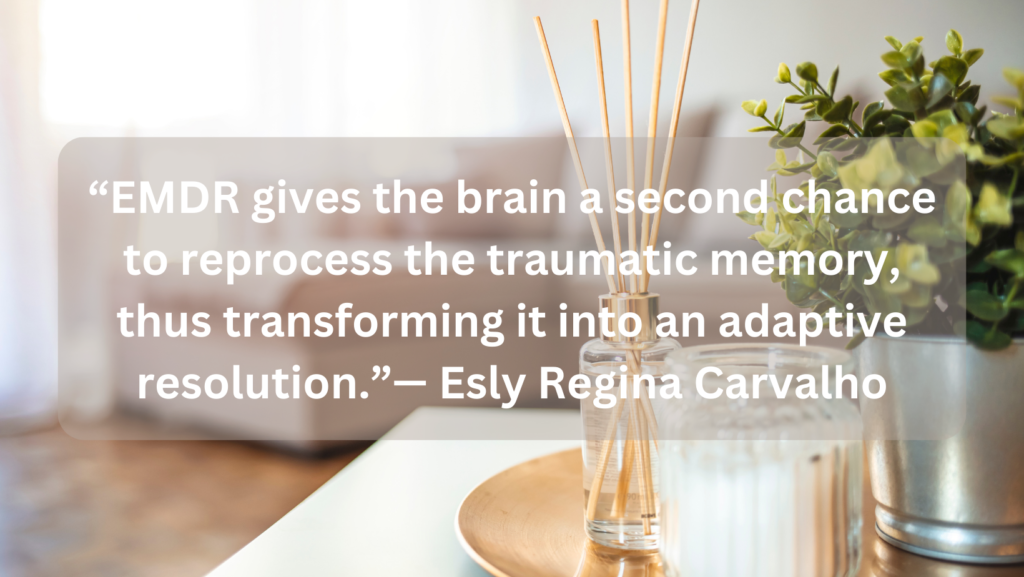
Eye Movement Desensitization and Reprocessing (EMDR) Therapy
A structured therapy that encourages the patient to briefly focus on the trauma memory while simultaneously experiencing bilateral stimulation (typically eye movements), which is associated with a reduction in the vividness and emotion associated with the trauma memories.
EMDR was developed in 1987 for the treatment of posttraumatic stress disorder. This treatment has gained more attention and become more widely used in the past 10 years. For some, memories of traumatic events are not adequately processed resulting in PTSD symptoms such as flashbacks and nightmares. These memories that are unprocessed are understood to contain the beliefs, thoughts, emotions, and physical sensations that occurred at the time of the traumatic event.
Many treatments focus on directly altering the thoughts, emotions, and physical responses that resulted from the trauma. The memory itself is the focus of EMDR therapy. Symptoms can be eliminated or reduced by the EMDR process by changing the way the memory is stored.
EMDR therapy uses a structured eight-phase approach that includes:
- Phase 1: History-taking
- Phase 2: Preparing the client
- Phase 3: Assessing the target memory
- Phases 4-7: Processing the memory to adaptive resolution
- Phase 8: Evaluating treatment results
Currently insurance not accepted for EMDR. Private pay only.
To see if EMDR is right for you, contact us now for a 30 minute in-person consultation with Amberleah Mercado M.S. (IMH 22149)


